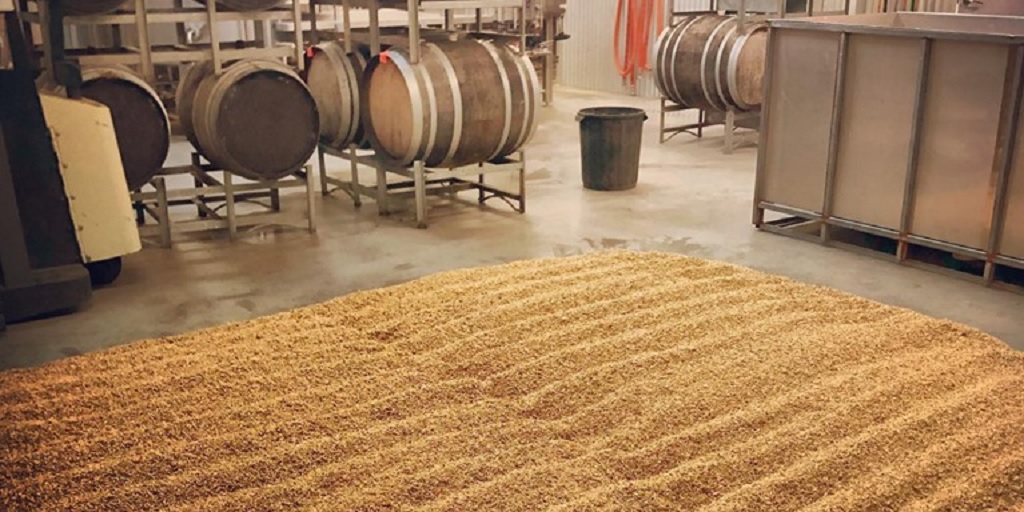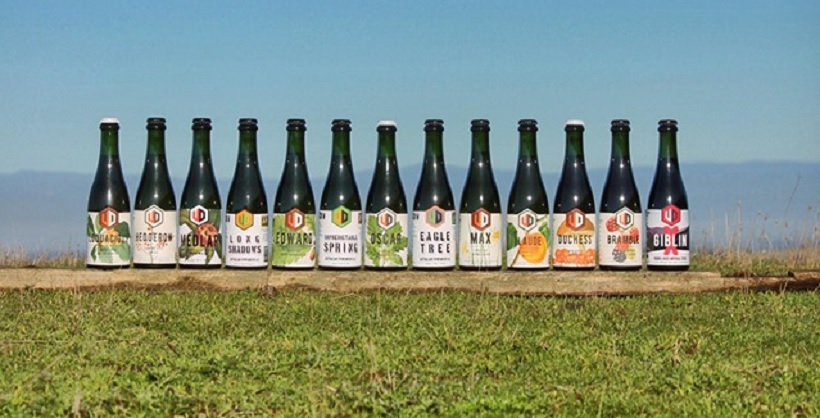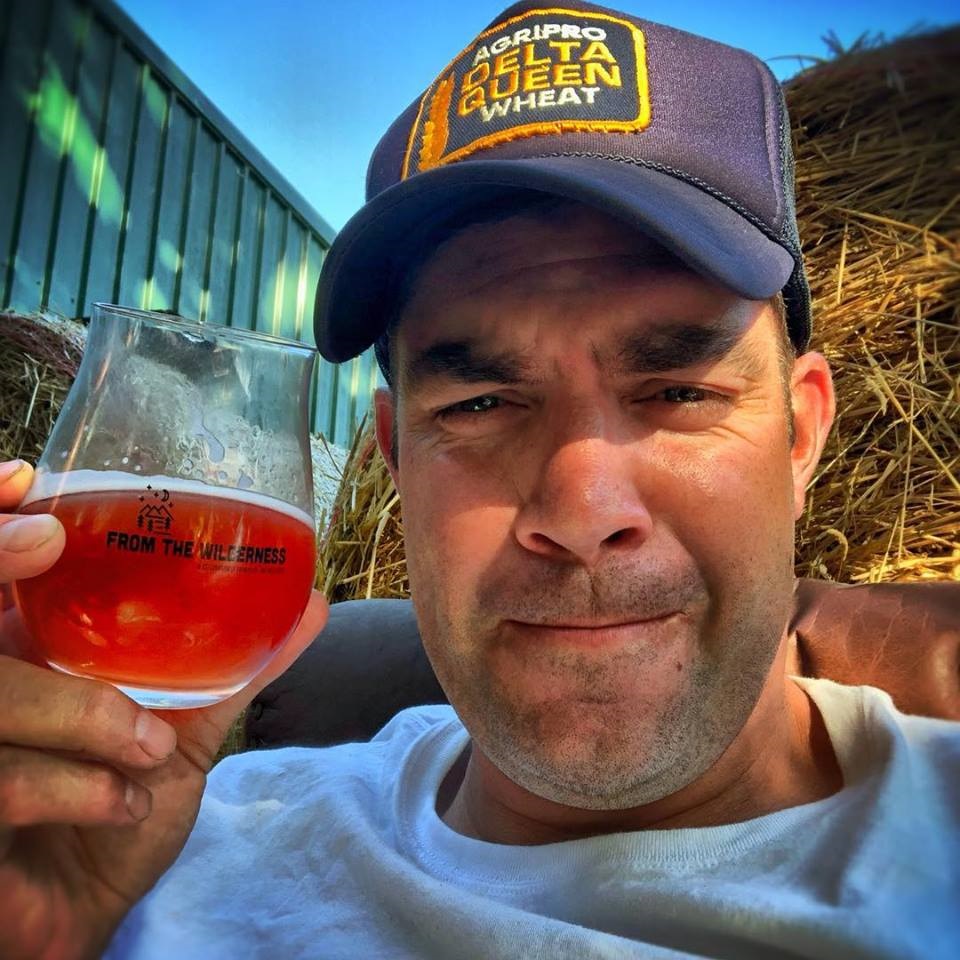
Tasmania’s Van Dieman Brewery brings malting in-house

As the brewing industry becomes increasingly interested in terroir and how the provenance of the ingredients can impact on flavour profiles, Van Dieman Brewing in Tasmania has taken this enthusiasm a step further.
The White Hills brewery has started malting its own grain, sourced and processed on the family farm in Northern Tasmania.
Van Dieman’s founder and brewer, Will Tatchell, explained that he had come full circle having grown up on farms and growing barley for the historic Cascade Brewery and Broags, and his agricultural background gave him the expertise to make in-house malting possible.
Plans to reinvent itself as a farm brewery have been in the works since 2015, and in 2017 it first launched its estate ales, and the brewer has always used hops grown on site in its beers.
“The reason we’re doing it is because we can,” Tatchell said.
“To be able to do that and subsequently brew with it, it’s a rewarding process.”
Bringing malting operations in-house is also part of wider industry trends that emphasise the origin of ingredients and how this affects the flavour profile of each beer.
“Fortuitously, four or five years ago we had a redress of where the business was going, and we realised the farm was going to be a critical component,” Tatchell said.
“We looked at where the market was and what it had to offer, and realised that we had the capacity to leverage that, add value and tell a bit of a story.”
https://www.facebook.com/vandiemanbrewing/videos/2380902265514542/
Practicalities of malting
When Van Dieman’s maltster moved to 3 Ravens in Melbourne, Tatchell decided to take over the process himself.
The operation is still makeshift, using 1,000-litre IBC tanks and a series of hoses to respirate the grain during the steeping phase, a stainless steel germination bin and a 3x3m kiln.
The germination bin is used in the first 48 hours to ensure germination beginning at moderate temperatures, following that the green malt is dispersed onto the floor to dissipate heat and allow the ability to turn the malt every 8-12 hours.
“What we have in place is a setup that’s providing us with proof of concept,” Tatchell said.
“We wanted to see whether we could do it and how this system works.
“We’re learning more about the malt and flavour characteristics on the fly all the time,” Tatchell said.
“So far what our grain, and the system in place is producing is significantly better malt than what we were expecting to get out of which gives us confidence progressing forward and incorporating our own malts into all of our beers.”
He said that malting was the “missing link” in the chain which would allow the majority of ingredients to be sourced on site, and part of the interest was ensuring consistency and quality in all ingredients, as well as flexibility in what they use.

As we spoke, Tatchell was about to steep a batch of barley, but they have also harvested a Schooner barley variety. The yields are significantly less as it’s an older barley variety, according to Tatchell, but as they are just growing for themselves this is not necessarily an issue – quality flavour and aroma are the key drivers for the cereal production on the farm.
So far, the malting project has progressed to the point where the team at Van Dieman have already scaled up their initial 300kg malting runs, launched in August last year, to 600kgs, having successfully malted over 20 tonnes in that time .
But it’s not enough that now 50 per cent of the malt used in Van Dieman’s beers comes from the estate, Tatchell wants to move into specialty malts, which require a roaster rather than a kiln.
Most of the malt has gone into special or estate ales, which are all farmed or locally sourced ingredients. However in February, Van Dieman started transitioning its core range to using the estate malt, and its Pale Ale now contains estate malt exclusively .
Terroir and the consumer
Bringing a sense of place to beer has been a focus for brewers across the country, partially to help their beers stand out in a crowded market place.
However consumers may not have caught on to the trend as fast as brewers have, according to Tatchell.
“I don’t think it’s there yet in the consumer mind with regards to beer, the terroir element or the sense of place,” he said.
“Wine does it really well, and a focus on the origins of meat and vegetables at the supermarket is starting to take off. But with beer at the moment, we find that it’s just behind the eight ball.”
Tatchell said that getting consumers’ heads around a product with four ingredients instead of one was part of the issue.
“The moment we package the four ingredients into one it sort of goes over people’s heads and you get a blank look.
“It comes back to the education of drinkers, how much they know about beer and the broad array of styles and ingredients, and capacity that we have to change flavours compared to a single-ingredient product such as wine.”
The increasingly complex question of provenance remains at the forefront of a brewer’s mind – but will it catch on with consumers and will brewers continue to be enamoured with the idea?
“I think it’s hard to say because it’s a consumer-led answer and if you had the answer, you’d be reaping the rewards,” Tatchell said.
“We’re simply doing what we can from the paddock to the pint and providing a genuine option for the consumer to chose, learn about and ultimately enjoy our farm beers”

Will it catch on?
So how does the process of malting compare with that of brewing, and is it worth it?
“Like brewing, with malting it just depends how far you drill down on everything you want to control,” Tatchell said.
“Nowadays you can develop a brewing recipe and have access to the primary ingredients, and adjuncts and brew it in 10 different breweries in 10 different countries.
“You have the capability to do that relatively easily, and access to ingredients is phenomenal, but it makes it slightly homogenised.”
With water drawn from a spring on the farm, a house yeast established after a spontaneous capture isolated 115 different indigenous yeast strains, and hops and grains produced on site, keeping an eye on volume and quality has never been easier at Van Dieman. But having “three hats on” as a grower, maltster and brewer isn’t easy.
“I probably wouldn’t advise brewers to put in their own malting setup unless you’ve got plenty of time on your hands and are a glutton for punishment.
“By the time we pull it out of silo to steep, then get all the way to getting it in the kiln, cleaning it and bagging it, we’re handling it almost 10 times to get something we can essentially with a phone call get whatever volume we want from Bintani or Cryer, of other suppliers.
But it’s not all bad, says Tatchell.
“It does give us a unique perspective, of being able to control the entire process of a beer from ground to glass. It’s something that very few breweries – let alone businesses – have the capacity to achieve, influence and react to changing situations, be they market forces or climatic conditions.
“The product we produce and the enjoyment it brings to those lucky enough to enjoy these beers is as much validation for our effort as it is confidence in where we constantly moving towards with our brewing and the beers we’ll offer.
“After all, beer is inherently made up of four core ingredients, all of which are intrinsically linked to agriculture, so in essence we’re simply farming beer – and we love it.



